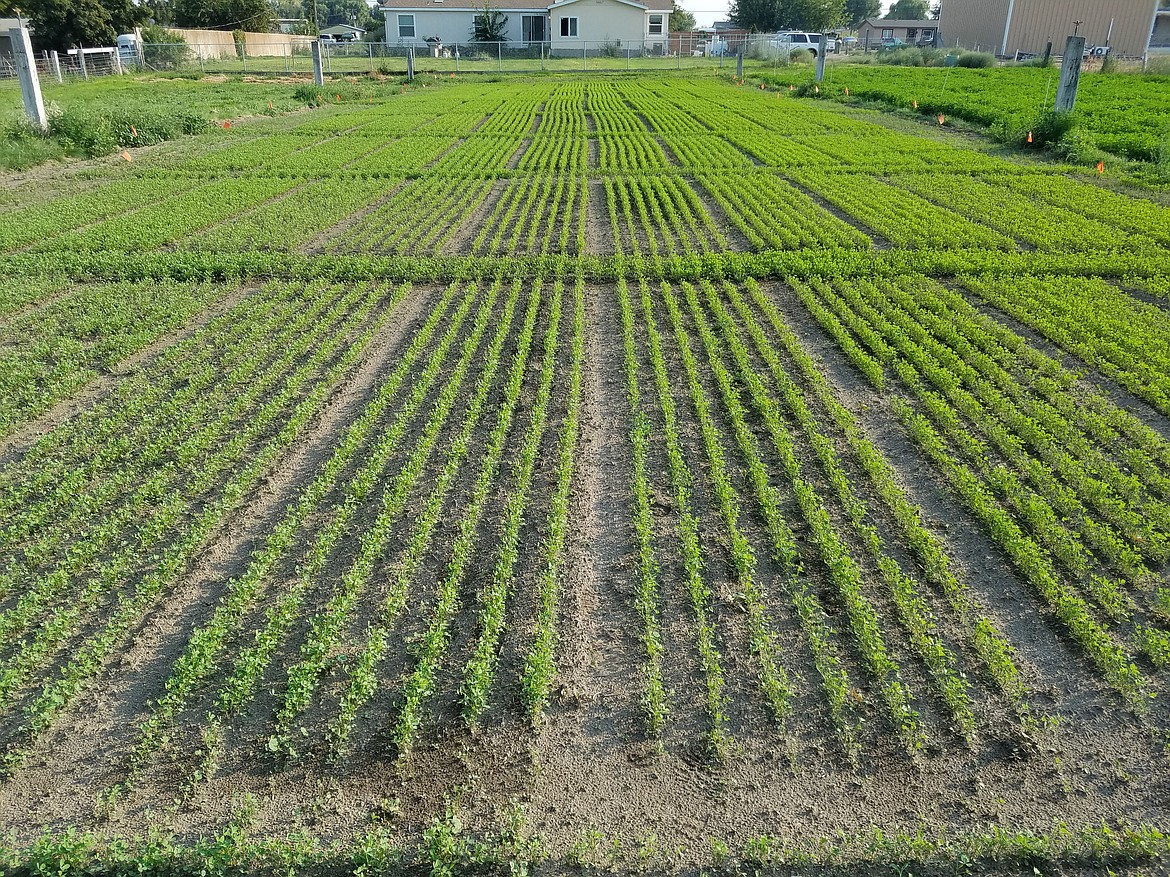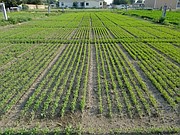Testing for the best hay
PASCO — Steve Norberg plants a lot of alfalfa.
“I run nine experiments every year at two locations,” the Washington State University researcher and specialist on forage and irrigated crops said. “Each (planting) goes three years. I start one every year and end one every year.”
“And I’ve got other research that I’m doing too,” Norberg added.
But it’s the alfalfa research Norberg has been doing for the Washington State Hay Growers Association since the Nebraska native arrived at WSU in 2011 that is the focus of so many people’s interest.
“About 18 different private seed companies submit seeds to me, I grow them, and we look at the results from an unbiased perspective,” Norberg said.
Norberg explained each trial lasts three years, and he plants a new trial and harvests an old trial every year at fields near Pasco and Othello, looking at each cutting for protein, moisture and fat content, as well as overall calories and yield per acre. He grows patented alfalfa varieties, Roundup Ready varieties, and a few older varieties in the public domain to compare.
“I run the trials for three years and I always encourage farmers to look at the three-year data before looking at anything else,” he said. “One year data may be like a race horse, but you need something that will last three years.”
The goal of the tests, Norberg said, is to identify varieties of alfalfa that are well-adapted to the Columbia Basin, its pests and climate that will still yield well. All test fields are planted the same — 22 pounds of seed per acre spaced six inches apart in plots 4 by 15 feet.
According to a 28-page evaluation of the 2018-2020 alfalfa trials, three-year yields at the test plots near Othello yielded anywhere from seven tons per acre — 77% of the mean for all Othello varieties — the public Vernal and Venema varieties to 10.6 tons per acre — 116.8% of the mean — for Blue River Hybrids’ Quail 5 variety.
Conventional hybrid varieties planted the same year performed somewhat better in Pasco, with Vernal yielding 7.8 tons per acre — 76% of the mean — while the top performing variety was DuPont Pioneer’s 54Q29, which yielded 11.25 tons per acre — 109.2% of the mean.
Roundup Ready varieties planted in Pasco performed roughly the same, with DeKalb’s DKA44-16RR yielding 10.3 tons per acre — 95.5% of the mean — while DeKalb’s DKA43-18RR yielded the best at 11.2 tons per acre, or 103.8% of the mean for the Roundup Ready test plots.
A good yield will be more than 100% of the mean for a three-year trial Norberg said, though yield itself is only one part of the picture.
Norberg said primary measurements for the nutritive value of alfalfa hay are the relative feed value (RFV) and the relative feed quality (RFQ), both of which are intended to measure the nutritive value of forage hay, especially for dairy cattle, which have special requirements for protein, fiber and other nutrients.
Dairy cattle usually get the first cutting of alfalfa hay, which in Norberg’s trials in 2020 was on May 7 for the Pasco fields and May 20 for the Othello fields. As is the last cutting of the year, he said. In Othello, the test plots were only cut four times, the last being on Aug. 12, while both sets of Pasco plots were cut five times, with the last cut done on Sept. 11.
“The growing season is shorter in Othello than Pasco, farmers traditionally only get four cuts in Othello, but sometimes I get five, but it is pushing it,” Norberg said.
Because of that, on average, the Pasco plots yielded two tons per acre more alfalfa hay than the Othello plots because of extra cutting in September.
“Dairy cows have to have high-quality hay,” Norberg said. “Feeding to beef cattle doesn’t require such high-quality feed. But your dairy cow is a finely-tuned animal for milk production.”
However, a fair amount of first-cutting alfalfa hay from the Columbia Basin is also exported from the ports of Seattle-Tacoma and even as far away as Long Beach, Calif., to cattle feeders in Asia, Norberg said.
According to the U.S. Department of Agriculture, U.S. farmers exported 2.6 million metric tons of alfalfa hay in 2017. In fact, Norberg said hay is what fills up so many of those shipping containers that alight in U.S. ports containing consumer goods and other manufactures made in Asian factories.
“In the U.S., alfalfa hay is the third-largest commodity by dollars of any commodity, following corn and soybeans,” he said.
Which is why the work he does on improving hay quality is so important to hay farmers and the Washington Haygrowers Association, Norberg said.
Alfalfa and timothy hay are important crops for the Columbia Basin, and ones the region can easily produce because of the water provided by the Columbia Basin Project to so many of the area’s farmers.
“We’re well supplied with irrigation water, so irrigating to four acre-feet in a season is no problem,” Norberg said. “You can’t do that in Colorado.”
“This is a blessed area. People that have been here forever don’t know how fortunate they are to have the water supply they’ve got. And I hope we never lose it,” he said. “We have to be very careful we never lose it.”
Charles H. Featherstone can be reached at [email protected].






